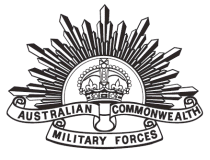

| Regimental number | 966 |
| Place of birth | Northamptonshire, England |
| School | Infant Orphan Asylum, Wanstead, Essex, England |
| Age on arrival in Australia | 25 |
| Religion | Church of England |
| Occupation | Labourer |
| Marital status | Single |
| Age at embarkation | 35 |
| Next of kin | Mother, Mrs Jane Vergette, Peterborough, Lincolnshire, England |
| Previous military service | He enlisted in the Royal Marines, served for a few years. He was on HMS "Goliath" off the Chinese Coast 1900 and bought his discharge. |
| Enlistment date | |
| Rank on enlistment | Private |
| Unit name | 2nd Battalion, F Company |
| AWM Embarkation Roll number | 23/19/1 |
| Embarkation details | Unit embarked from Sydney, New South Wales, on board Transport A23 Suffolk on |
| Rank from Nominal Roll | Private |
| Unit from Nominal Roll | 2nd Battalion |
| Other details from Roll of Honour Circular | A descendant of a French Refugee during the religious wars in the 16th Century - who settled in Lincoln, England. |
| Fate | Killed in Action |
| Place of death or wounding | Gallipoli, Turkey |
| Date of death | |
| Age at death | 37 |
| Age at death from cemetery records | 37 |
| Place of burial | No known grave |
| Commemoration details | The Lone Pine Memorial (Panel 19), Gallipoli, Turkey The Lone Pine Memorial, situated in the Lone Pine Cemetery at Anzac, is the main Australian Memorial on Gallipoli, and one of four memorials to men of the New Zealand Expeditionary Force. Designed by Sir John Burnet, the principal architect of the Gallipoli cemeteries, it is a thick tapering pylon 14.3 metres high on a square base 12.98 metres wide. It is constructed from limestone mined at Ilgardere in Turkey. The Memorial commemorates the 3268 Australians and 456 New Zealanders who have no known grave and the 960 Australians and 252 New Zealanders who were buried at sea after evacuation through wounds or disease. The names of New Zealanders commemorated are inscribed on stone panels mounted on the south and north sides of the pylon, while those of the Australians are listed on a long wall of panels in front of the pylon and to either side. Names are arranged by unit and rank. The Memorial stands over the centre of the Turkish trenches and tunnels which were the scene of heavy fighting during the August offensive. Most cemeteries on Gallipoli contain relatively few marked graves, and the majority of Australians killed on Gallipoli are commemorated here. |
| Panel number, Roll of Honour, Australian War Memorial | 34 |
| Miscellaneous information from cemetery records | Parents: George and Jane VERGETTE. Native of Peakirk, Peterborough, England |
| Other details |
War service: Egypt, Gallipoli Statement, Red Cross File No 2820104H, 669 Pte J.H. PEACOCK, D Company, 2nd Bn (patient, 16th Stationary Hospital, Mudros), 4 November 1915: 'Informant, who knew him well, says he was wounded in the hip by shrapnel on April 25th about 1½ miles inland. It did not seem a very bad wound though he was unable to walk. Informant was on the Peninsula until July and has heard no more news of him. This man was about 5'6" in height, dark hair, sallow complexion, close cut moustache. He was formerly in the Royal Marines and saw active service in China. He showed informant the wound.' Second statement, 111 Gunner H.C. THOMPSON, 14th Field Artillery Brigade (formely D Company, 2nd Bn), 2 July 1916: 'The last time I saw him was about 2nd May, 1915. I think at Walker's Ridge. We had been brought up from the right flank to reinforce the left flank where the New Zealanders were, and he was lying down with his pack under his head beneath an overhanging cliff together with a lot of other wounded men; he appeared to be badly wounded in the body. Vergette was a short fellow, about 5'7", rather dark, and came from New South Wales, and was a married man.' Medals: 1914-15 Star, British War Medal, Victory Medal |
| Sources | Red Cross File No 2820104H |